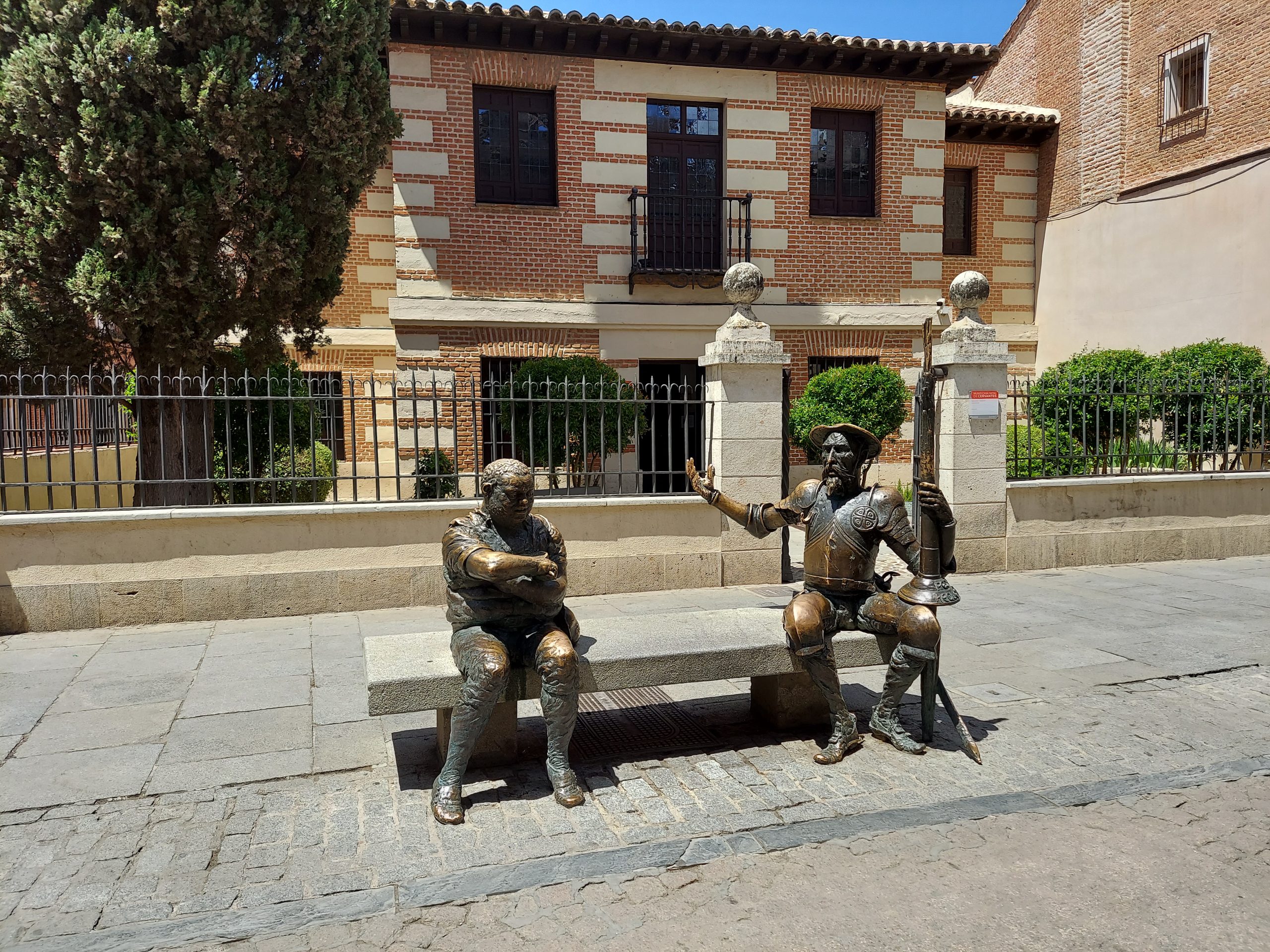
Sitting and talking, Quixote de la Mancha and Sancho were waiting for us in front of the Museo Casa Natal de Cervantes at Calle Mayor 48. Who better than them to welcome us. Continue reading “Cervantes Birthplace Museum – Alcalá de Henares”

Sitting and talking, Quixote de la Mancha and Sancho were waiting for us in front of the Museo Casa Natal de Cervantes at Calle Mayor 48. Who better than them to welcome us. Continue reading “Cervantes Birthplace Museum – Alcalá de Henares”
As part of the urban transformation proposed by Napoleon III in Paris during the Second Empire, the “Opéra Garnier”, also known as the “Palais Garnier” or Paris Opera, was built. The emperor intended the new opera house to be the symbol of the new Paris. Continue reading “The Garnier Palace of Paris”
The first thing that caught our attention about this church is precisely its name, “San Antonio de los Alemanes” or Saint Anthony of the Germans. It was founded by Philip III at the beginning of the 17th century, when Portugal was part of the Hispanic kingdoms under the Habsburgs. The mission of both the church and the adjoining hospital was to receive the sick and Portuguese pilgrims passing through Madrid. For this reason it was originally called Saint Anthony of the Portuguese. Continue reading “Royal Church of Saint Anthony of the Germans – Madrid”
One of the most visited and emblematic bridges in Paris is the “Pont Alexandre III”. It was inaugurated by Émile Loubet, seventh president of the French Republic during the Third Republic, on April 14, 1900 on the occasion of the Paris International Expo. In 1925, the bridge was part of the Exposition “des Arts Décoratifs” of Paris and fifty years later, in 1975, the Pont Alexandre III was declared a French Historical Monument. By 1999, it was included in the delimitation of the Seine riverbanks in Paris, declared a World Heritage Site by UNESCO. Continue reading “The Alexander III Bridge in Paris”
The Garden of the Island is located to the north of the Royal Palace of Aranjuez and is considered one of the main works of Spanish Renaissance gardening along with the “Casa de Campo” in Madrid. Since 1931 it has been of Cultural Interest and since 2001 it has been a World Heritage Site as part of the Cultural Landscape of Aranjuez declaration. Continue reading “The Garden of the Island – Aranjuez”
Inspired by the French gardens of the time, the engineer Esteban Marchand in 1727, create the “El Parterre” or The Flowerbed of the Royal Palace of Aranjuez. It is located next to the eastern facade of the Royal Palace of Aranjuez. The floral decoration of the garden was the work of the French gardener Esteban Boutelou, who completed the work in 1736. It is considered one of the few examples of French classical gardening in Spain. Continue reading ““El Parterre” (The Flowerbed) Aranjuez”
When you think of Aranjuez, you have to think big. Only when you arrive and contemplate its Royal Palace, this grandeur is confirmed. And no wonder, it is the country residence preferred by the Spanish Kings, part of the Cultural Landscape of Aranjuez; declared World Heritage by UNESCO in 2001. Continue reading “The Royal Palace in Aranjuez”
Built between 1764 and 1790, the Paris Pantheon was the first major monument of the French capital and the first place from which Paris could be seen from the heights. Mainly because its construction predates that of monuments such as the Eiffel Tower. It is located in the Latin Quarter, very close to the Luxembourg Gardens. Continue reading “The Paris Pantheon”
Occupying an area of just over two hectares, the Sabatini Gardens are located in front of the north facade of the Royal Palace of Madrid. It is a neoclassical garden in keeping with the palace. Although it can be contemplated splendidly from the railing on Bailén street, it is best to go down its monumental stairs, built in 1972, when the gardens were renovated, and enjoy it from below.
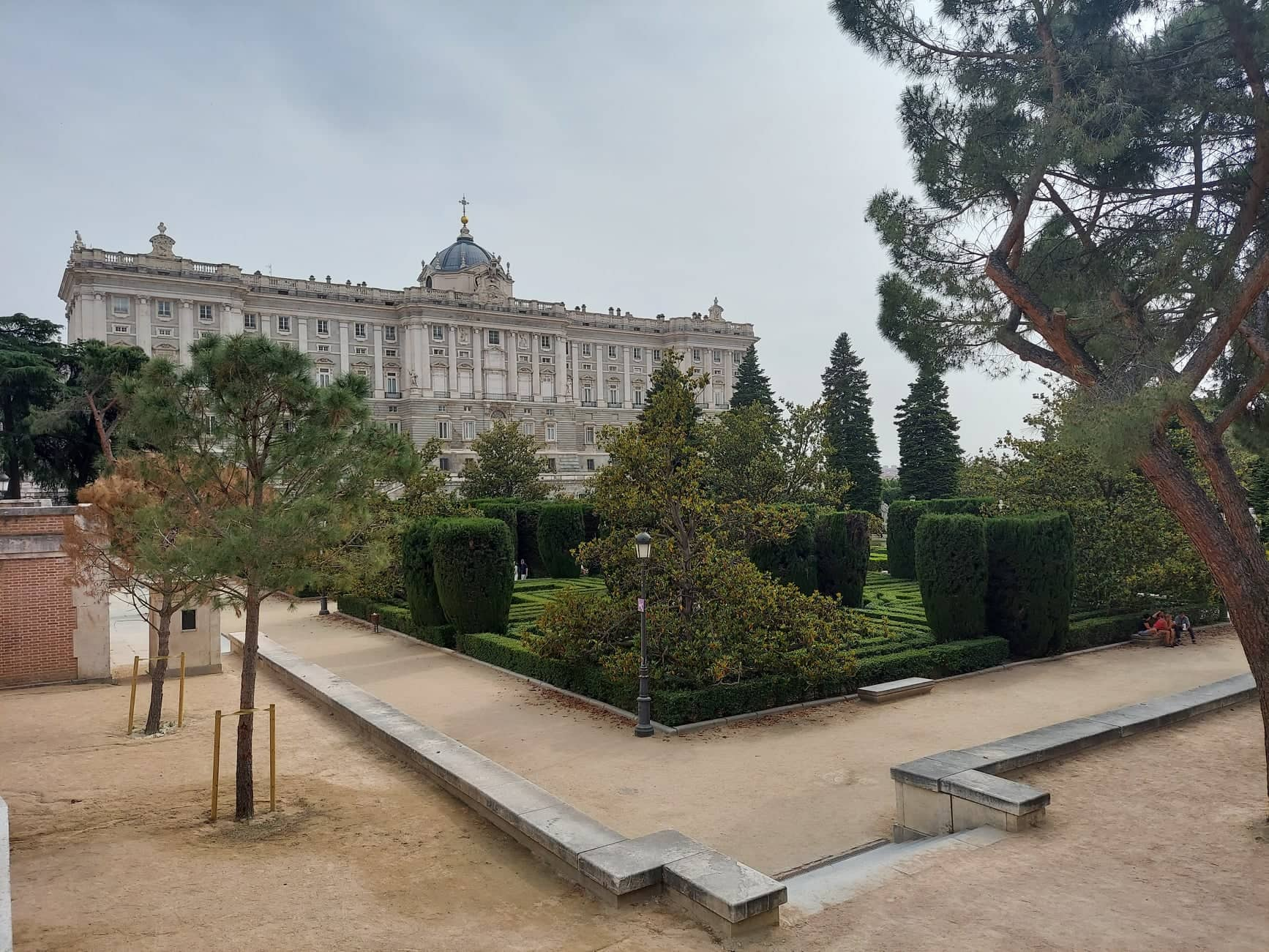
The space now occupied by the Sabatini Gardens was the site of the Royal Stables built in the 18th century by the Italian architect Francesco Sabatini next to the palace. The Madrid City Council, in order to build a public park, conducted a competition whereby the winner of the project was the architect Fernando García Mercadal from Zaragoza. In 1933, the demolition of the buildings of the stables began and the construction of the gardens began and finally completed in the late seventies. They opened to the public in 1978 by King Juan Carlos I.
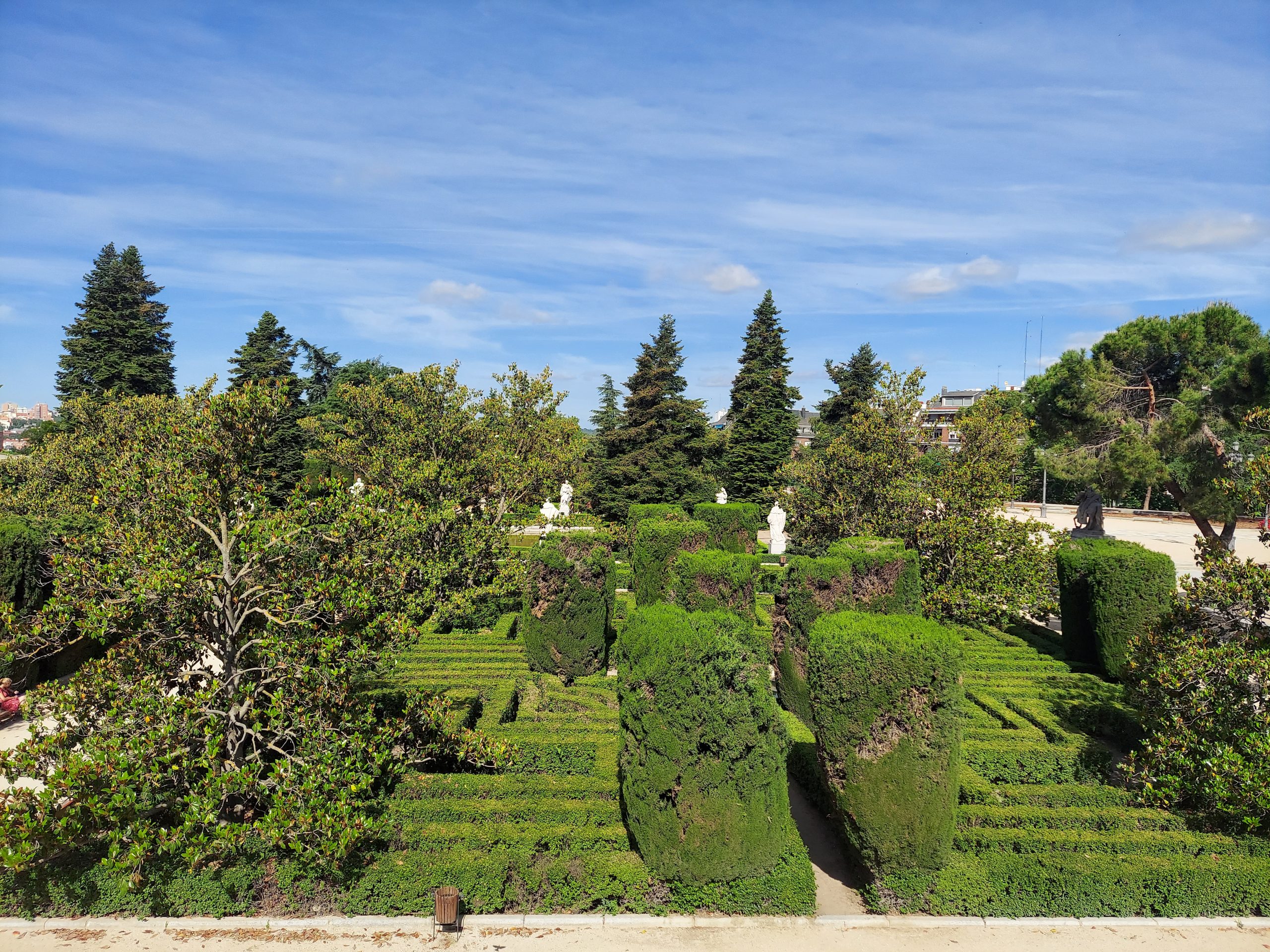
With its formal neoclassical style, there are well-pruned hedges, in symmetrical geometric patterns, with trees also arranged in a symmetrical geometric shape. The area is divided into three terraces or levels, each with its own charm. Strolling along its paths and confirming the perfection of all the symmetry displayed in these gardens, is enchanting.
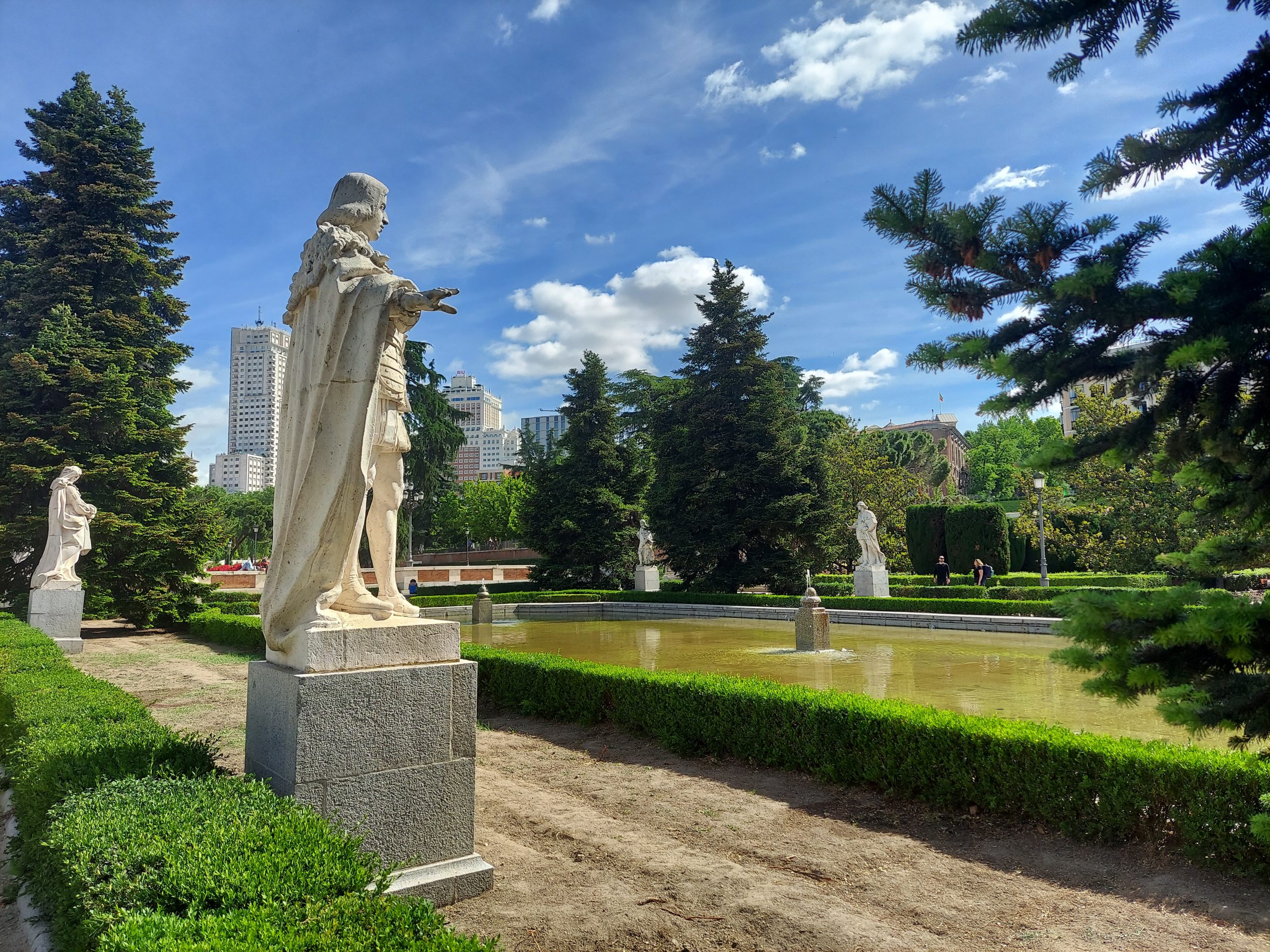
The Sabatini Gardens are adorned with a pond, statues and fountains. The statues represent ancient Spanish kings, which were not originally intended to adorn a garden. They are part of the collection of one hundred sculptures made during the construction of the Royal Palace. These statues have also been distributed in other areas, such as the cornice of the Palace itself, the Plaza de Oriente, the Retiro and the Capricho Parks.

It is the pond that serves as a mirror of the north facade of the Royal Palace of Madrid, the axis of the whole. And precisely, it is the perfect spot to take a picture of this side of the Palace. Why not, a “selfie” too?
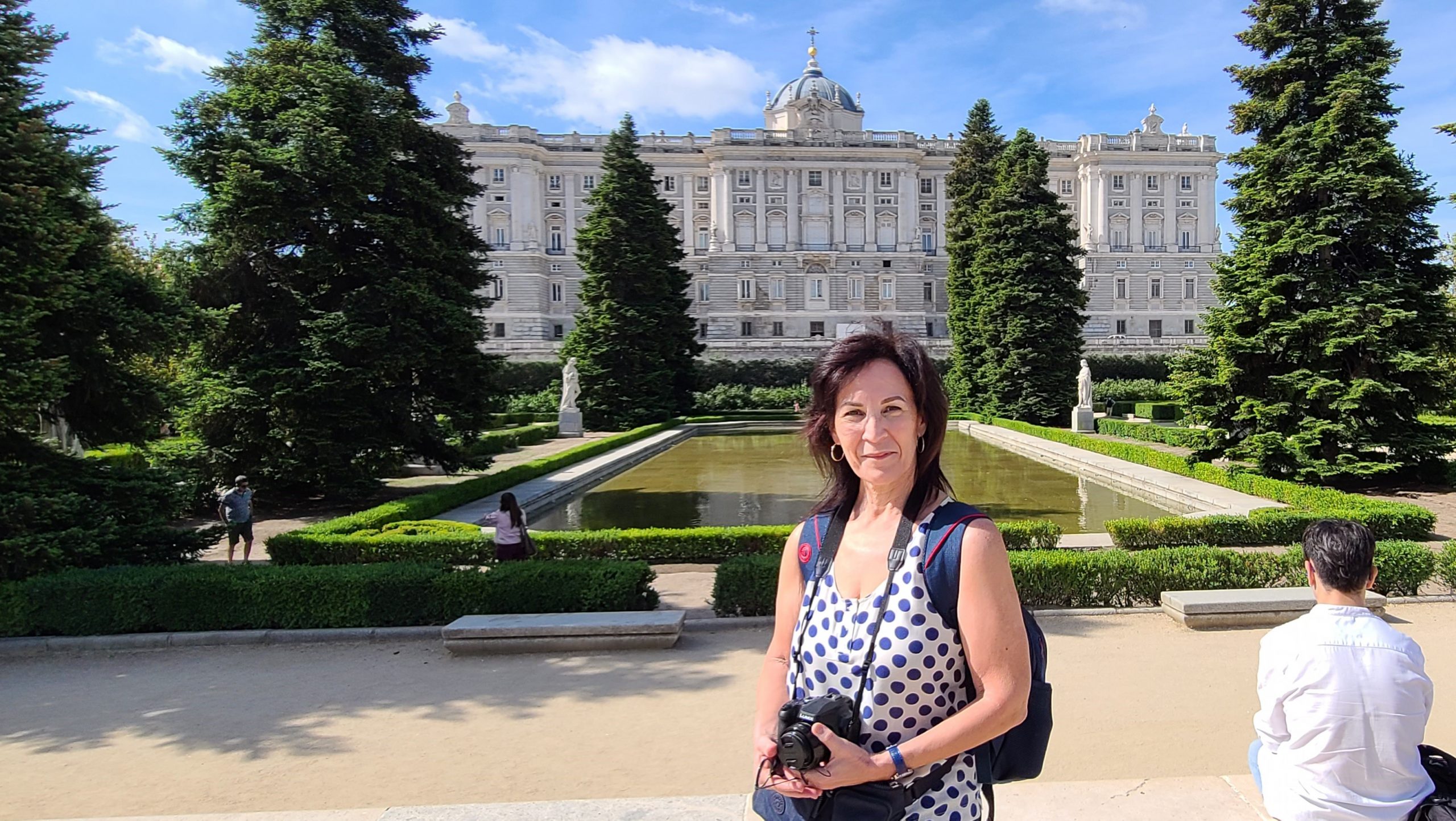
The best thing about this space, besides the fact that its entrance is free, is having the opportunity to sit on one of its benches and enjoy a good moment of tranquility and serenity. The vegetation, the beautiful views, the water and the art, all it in the midst of Madrid and worth visiting.
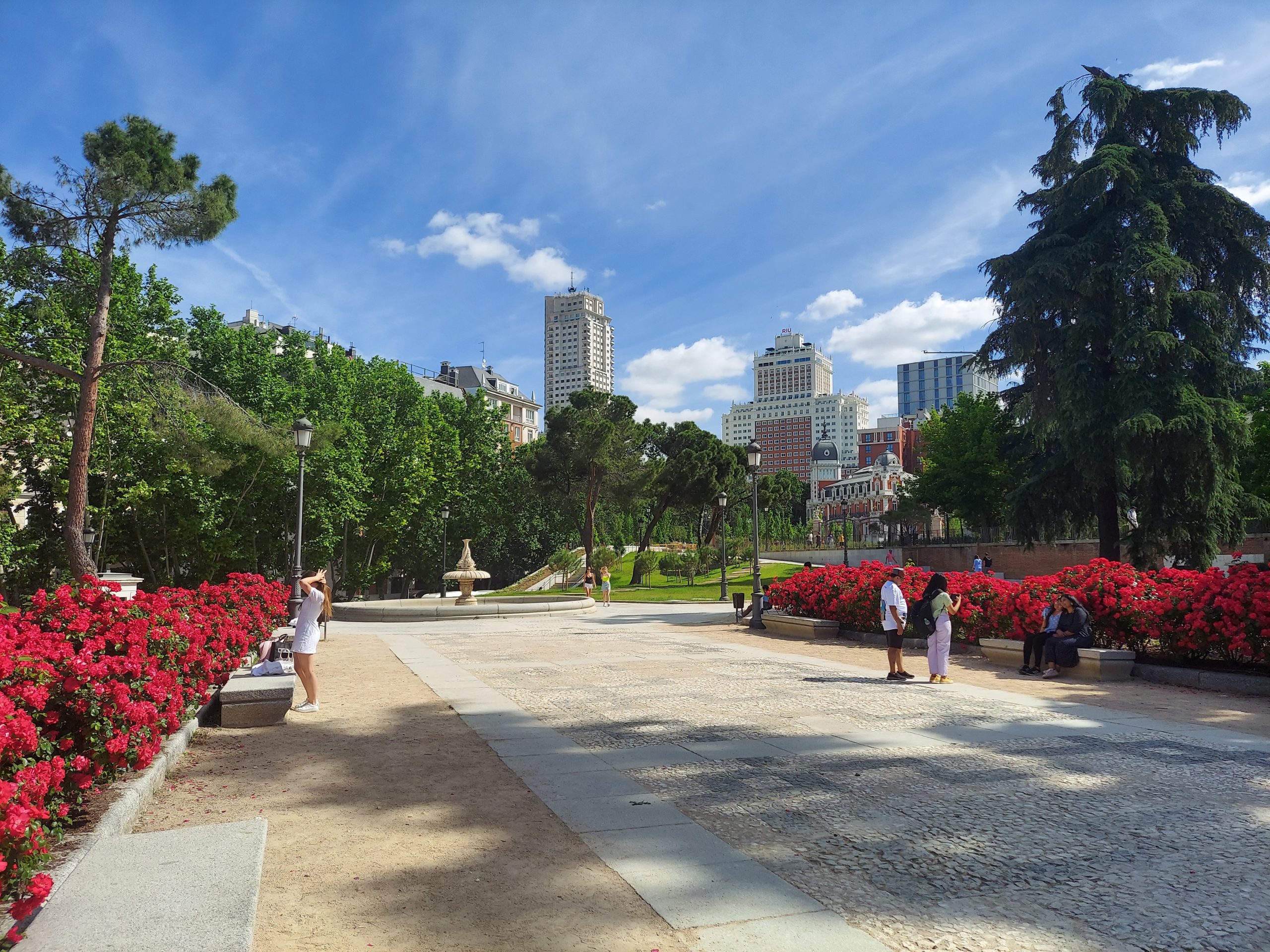
We had the opportunity to visit the Sabatini Gardens when its renovation had already been completed, at the end of May 2022. The transition that took us from the gardens to the Plaza de España was done very well.
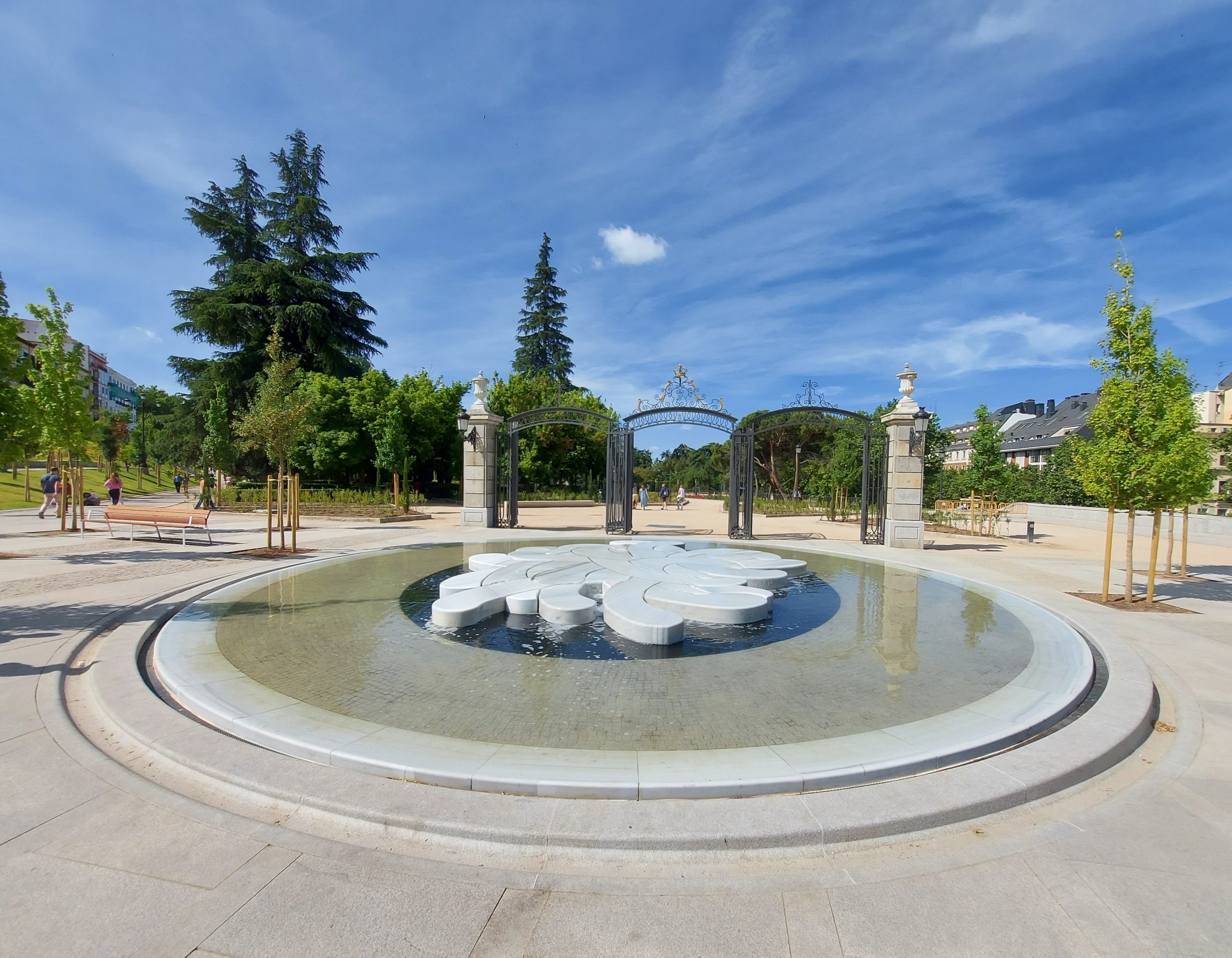
We don’t want to conclude without sharing a picture of the peacocks we spotted from Bailén Street, at the top of some trees. After a lifetime of seeing them on the ground, we found it very curious to see them in the trees and remembering that they are in fact, birds.

Resources:
https://www.esmadrid.com/informacion-turistica/jardines-de-sabatini
https://es.wikipedia.org/wiki/Jardines_de_Sabatini
https://www.miradormadrid.com/los-jardines-de-sabatini-2/
The first thing that caught our attention when we arrived at the Royal Site and Aranjuez Villa, was the large arcade along the way to the Saint Anthony Square, or the Square of “Mariblanca”, as it is commonly known. Continue reading “Saint Anthony of Padua, Aranjuez, Spain”